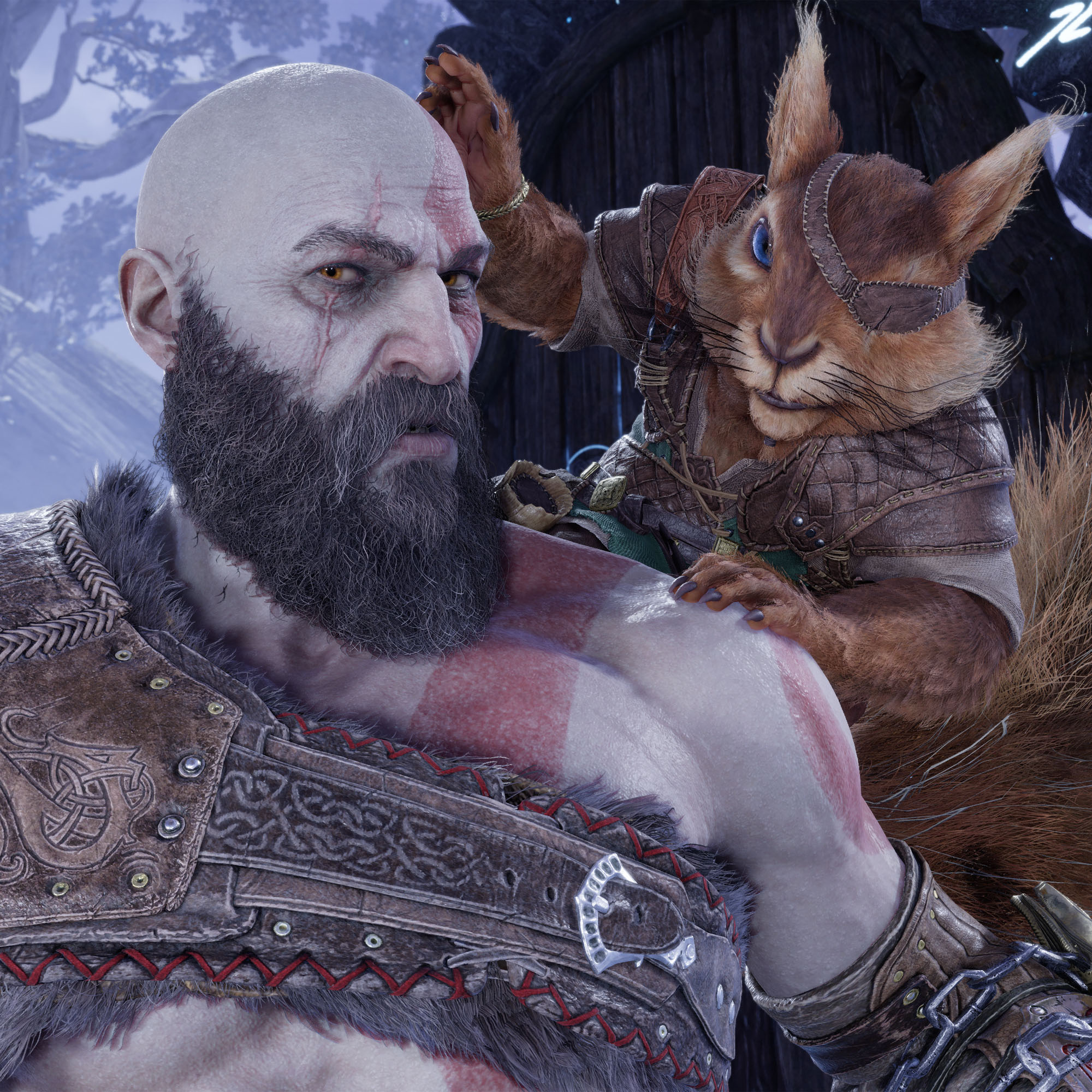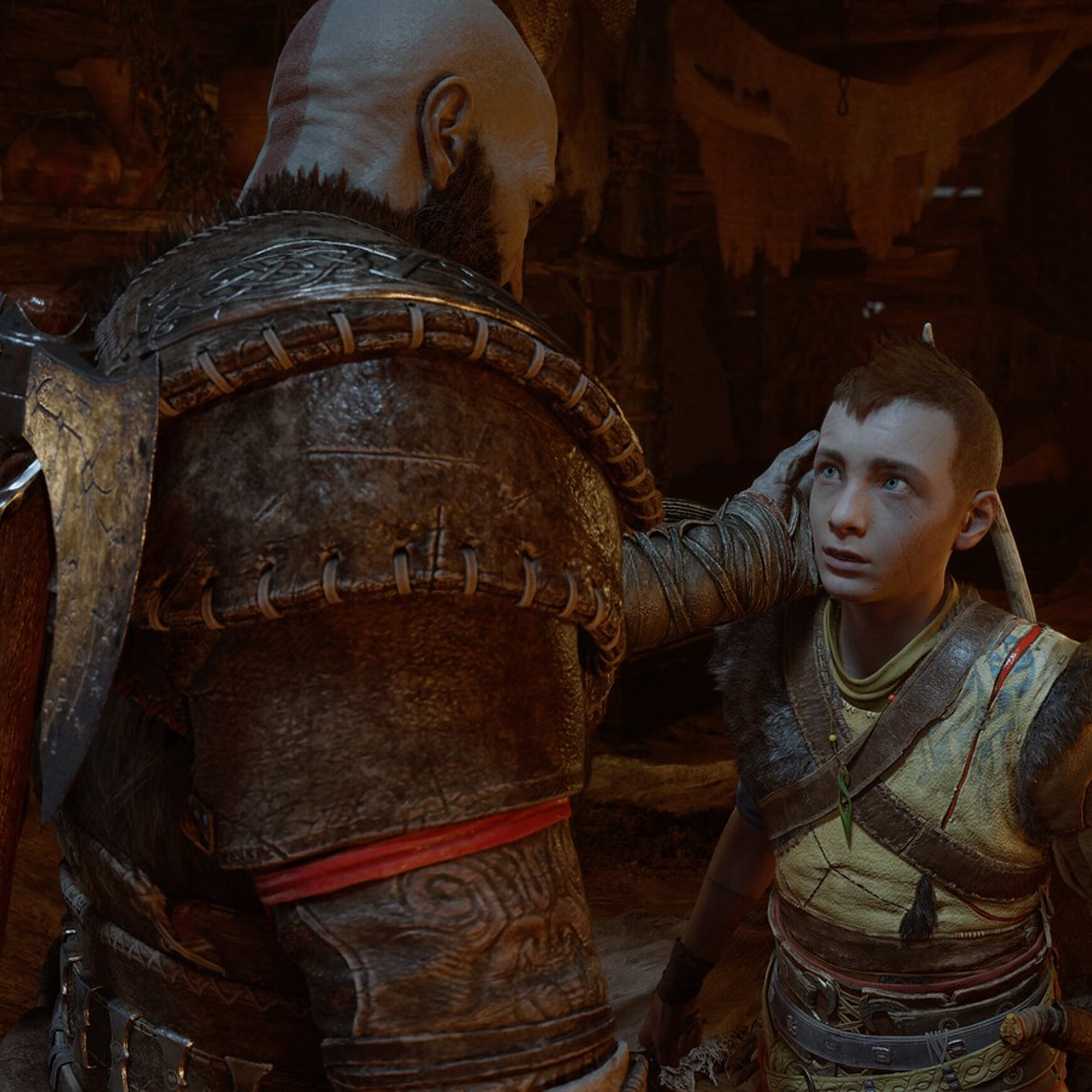
- POPSUGAR Australia
- Gaming
- God of War: Ragnarok’s Side Quests Curb Stomped My Heart In the Best Way Possible
God of War: Ragnarok’s Side Quests Curb Stomped My Heart In the Best Way Possible

God of War: Ragnarok is a blockbuster of a game. From its opening moments, which hurl a vengeful god, who wants nothing more than to see you dead, towards you, it’s an epic story that never lets up. But for all the magnificent set pieces and gasp-worthy reveals of the main story, it’s the side quests that stayed with me the longest.
Called Favours by the in-game menu, side quests in God of War: Ragnarok are sparse but meaningful. Instead of bloating the game with fetch quests or filler, Santa Monica Studio has opted for just a handful of side quests that are longer and more significant than the ones in most other games. It’s less Assassin’s Creed and more The Witcher 3 — in fact, the designer in charge of “player investment” even said that his goal for the optional content in Ragnarok was to be as good as The Witcher 3.
This was the goal I set for the optional content in #GodofWarRagnarok. The Witcher 3 is one of my favorite games of all time… It didn't seem possible, but this was literally the goal. Reading this felt amazing. https://t.co/X8Ycpe1SRs
— Anthony DiMento (@DiMentoXP) November 3, 2022
Quickly before we go any further: we’ll be discussing several early-game side quests that you receive during the main story in Svartalfheim, Alfheim and Vanaheim. This is your last chance to turn back if you haven’t finished the Vanaheim storyline and want to avoid spoilers!
What makes God of War: Ragnarok side quests so memorable is that they’re complete stories in and of themselves. They all serve a purpose beyond gaining XP or collecting loot, whether it’s learning more about prominent characters or permanently altering the landscape of the Nine Realms. In one early side quest, Kratos, Atreus and Mimir set about shutting down three pollutive mining rigs that Mimir helped build a long, long time ago in service of Odin. Now, some 112 years later, he asks for your help making up for the damage he caused the realm. The gameplay is relatively straightforward: you have to paddle to three small islands and fight your way through hoards of monsters before using Kratos’ Leviathan Axe to destroy the furnaces. The real significance of the side quest comes from Mimir’s dialogue as you work your way through the islands, which gives you valuable insights into Odin and why it’s important that you stop him.

Mimir tells you that forging weapons is a sacred process for the Dwarves, but Odin forced them to churn out nameless weapons and armour for his army. Not only did his mining rigs destroy their environment, but his greed took advantage of the Dwarves’ culture. The previous game did a good job of establishing Odin as a villain, but this side quest is one of the first times you see the consequences of his actions up close.
Another early side quest comes about at the start of your journey through Alfheim, when Atreus mentions hearing an animal in pain somewhere nearby. The side quest takes you deep underground where you find an enormous, glowing jellyfish called a Hafgufa that’s tangled up in magical tendrils. Once its freed, the Hafgufa races out of the canyon and flies high up into the sky above you, where it spends the rest of the game bobbing merrily. It’s one of the more magical scenes in the game — you might recognise it from the trailer — and seeing the creature fly free is a nice reminder that you achieved something meaningful by completing the side quest.
Not all of Ragnarok‘s side quests are so significant. Some involve slaying monsters or gathering herbs to help restless spirits move on. Odin’s ravens are back, although there are, thankfully, less of them to destroy this time, and you can take on optional combat challenges around the world to clear out powerful Draugr or realm tears. Treasure maps and artefacts have also returned, but Ragnarok balances out its optional content so well that none of it ever feels overwhelming. There are far less artefacts to collect than meaningful side quests, and helping the spirits move on only takes five or ten minutes. Even that can lead to magnificent results, though. In Vanaheim, a spirit asks you to restore her garden after it was poisoned. A few puzzles later and you’re watching the garden blossom back to life around you.

For all its strengths, God of War (2018) didn’t have such memorable side quests. Most of them came from Brok and Sindri and amounted to you uncovering relics that they used to craft your rare gear. Although fun, not many of the side quests felt connected to the main story, as if completing them would give you a greater understanding of the game.
Ragnarok improves upon its predecessor in every way, from combat to graphics and exploration, but it’s the jump in the quality of the side quests that will please a lot of gamers. Side quests in Ragnarok are so significant that they almost feel like they should be part of the main story. They’re bite-sized adventures that either get your heart racing or stomp on it, giving you a thrill or tugging at your emotions. In a main story that’s so long and action-packed, the side quests give you a chance to slow down and reflect on Kratos and the world around him. For a game about literal gods swinging at each other with magical weapons, Ragnarok has a surprisingly heartfelt story, but the side quests are often the most personal and emotional parts.
Here’s our biggest take away from the hours and hours we’ve put into God of War: Ragnarok: even if you’re not a completionist, don’t skip any of the side quests. You won’t regret it.
Want more PlayStation and PS5 news and deals? Check out these stories:
- Where to Buy a PS5 in Australia Right Now
- Good News: It Just Got Way Easier to Buy a PS5
- The New PS5 Is Available In Australia Right Now and It’s Not as Expensive As You’d Expect
- Cost of Living Increases Have Come For the PS5: Here Are the New Australian Prices
- God of War: Ragnarok’s Side Quests Curb Stomped My Heart In the Best Way Possible
- Is The Last of Us Part 1 Actually Worth Buying? Yes, and Here’s Why
- Bask In the Beauty Of the DualSense Edge PS5 Pro Controller
- The 12 Best Games On the New PlayStation Plus
- Here Are the Australian Prices For the New PlayStation Plus
- Where to Buy the Colourful New PS5 Console Covers
- Sony Is Launching a Loyalty Program To Reward Gamers



